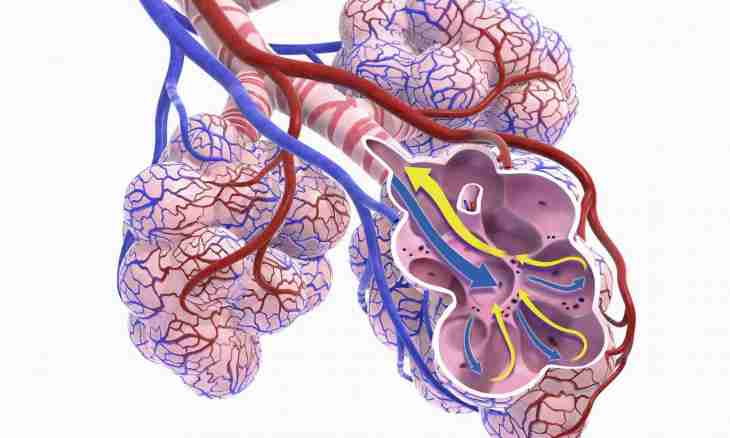The inhaled oxygen undergoes a number of transformations in a human body. From lungs with blood current it is transferred to bodies and participates there in the vital chemical reactions. Then erythrocytes transport it on veins back to airways in the form of coal acid. The smallest bubbles of lungs - alveoluses - collect this chemical compound in the capillaries where carbon dioxide takes the classical form. In such type of people exhales it.
Carbon dioxide (CO2) - a product of the metabolism occurring in a human body. The gas which is formed in cells of fabrics by diffusion moves to fabric capillaries. Getting to erythrocytes, carbon dioxide enters chemical interaction with water, and coal acid turns out. This reaction is catalyzed by karboangidrazy - specific enzyme which is deployed only in red blood cages. It is not in plasma. The reaction happening in erythrocytes does not allow concentration of carbon dioxide to reach high figures in these cages. As a result in red blood cages constantly diffuse new molecules of gas. Osmotic pressure in blood cells grows and together with it water content increases. Lead it to increase in volume of erythrocytes. Changes in cages lead to emergence of "Haldane's effect". The essence of effect is that oxygen binding by hemoglobin leads to replacement from carbon dioxide blood. It is essential in carbon dioxide transport from fabrics to lungs. Transfer of carbon is carried out in the form of salts - bicarbonates. In order that coal acid turned into bicarbonates, potassium ions are necessary. Their source is hemoglobin. As a result of these chemical reactions the amount of carbon dioxide in the form of potassium bicarbonate grows in fabric capillaries. In such look it is easier to transport it in lungs. In capillaries of a small circle of blood circulation the concentration of a dvuokosa of carbon is low. Here from it CO2 is chipped off. At the same time oxyhemoglobin is formed. It forces out potassium ions from bicarbonates. In red blood cells coal acid is split on CO2 and water. Carbon dioxide is removed from air cells in the course of an exhalation.

